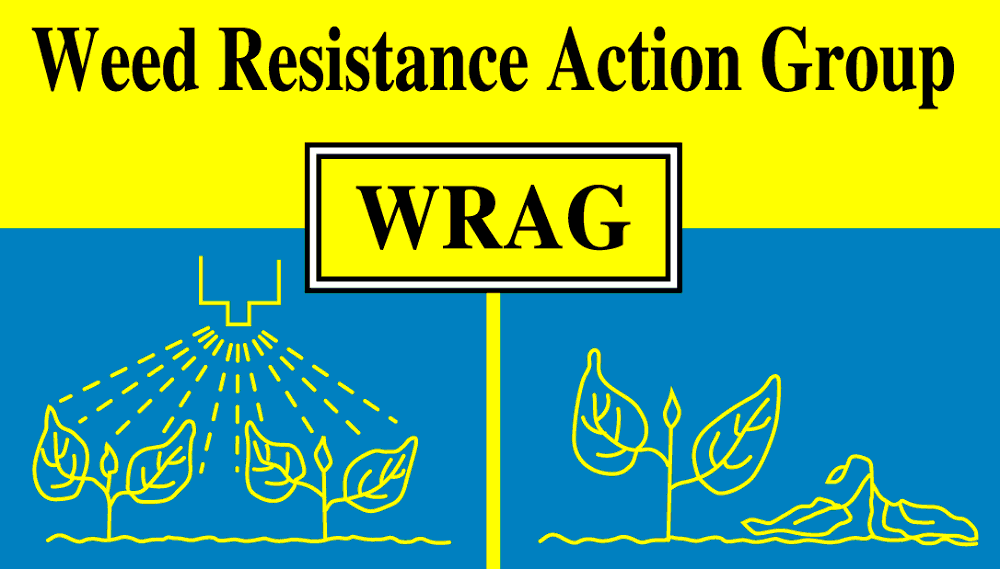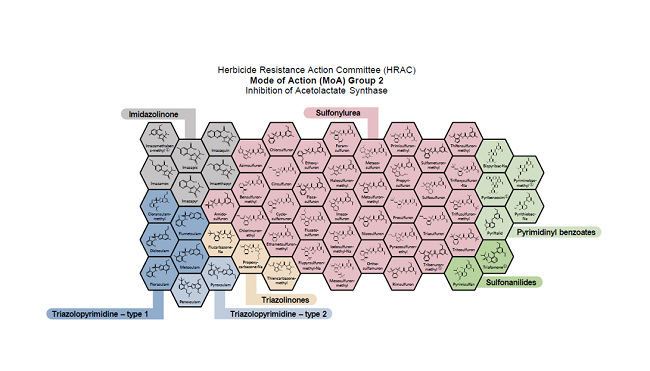Please click here to access the main AHDB website and other sectors.
- Home
- Knowledge library
- The Weed Resistance Action Group (WRAG)
The Weed Resistance Action Group (WRAG)
The Weed Resistance Action Group (WRAG) produces guidance on pesticide resistance issues. Hosted by AHDB, this information can be used to help protect crops and the long-term efficacy of herbicides.
The AHDB-supported Resistance Action Groups (RAGs) are informal, UK-based groups consisting of experts from the Crop Protection Association (CPA) member companies, other representatives from the agrochemical industry, a range of independent organisations, including public-sector research institutes, and the Chemicals Regulation Directorate (CRD).
About the Weed Resistance Action Group (WRAG)

Management guidelines
General guidance
Black-grass guidance
- Black-grass information by AHDB
- Black-grass: Why has this Weed become such a Problem in Western Europe and what are the Solutions? (this paper appeared in Outlooks for Pest Management 2017, published by Research Information)
- Black-grass ‘5 for 5’: Integrated weed management for long-term control (2017)
- Black-grass – everything you really wanted to know (2013)
- Black-grass – the potential of non-chemical control (2013)
- Black-grass risk resistance audit (2004)
Broad-leaved weeds guidance
Brome, rye-grass and wild-oats guidance
- Reduced sensitivity to ALS‐inhibiting herbicides in UK brome (news item 2020)
- Reduced sensitivity of sterile brome to glyphosate (news item 2018)
- Which brome is that? (a concise two-page guide) (2017)
- Identification of Brome grasses (a comprehensive four-page guide) (2015)
- Identification of wild-oat species (2015)
- Identification and control of brome grasses (2014)
- Effective, sustainable Italian rye-grass control in winter cereals (2007)
- Dealing with herbicide resistant wild-oats (2001)
Resistance
Resistance status
Glyphosate
- Outlooks on Pest Management glyphosate special (December 2018). This issue features several key articles on glyphosate. It includes a paper by James Clarke, chairman of WRAG, which looks at the role of glyphosate and issues around protecting its efficacy.
Resistance testing
- Maximising the benefits of herbicide resistance testing (2020)
- Detecting herbicide resistance - HRAC document (1999)
- Rothamsted Rapid Resistance Test for ALS Inhibiting Herbicides (2007)
- Rothamsted Rapid Resistance Test for rye-grass (2003)
- Rothamsted Rapid Resistance Test for black-grass, wild-oats and Italian rye-grass (1999)
- The 'R' system for interpreting results from herbicide-resistance screening assays in the UK (2007)
Reports
Reports: Glyphosate
Reports: Black-grass (mainly)
- Sustaining winter cropping under threat from herbicide-resistant black-grass (Alopecurus myosuroides). AHDB Project Report No. 560. (2010-2014)
- Combating herbicide resistance by developing and promoting more sustainable grass-weed control strategies. Defra Project PS 2721. (2012 – 2015)
- Developing and promoting more sustainable grass-weed control strategies to combat herbicide resistance. Defra Project PS 2714. (2009-2012)
- Integrated management of herbicide resistance. AHDB Project Report No. 466. (2005-2009)
- Herbicide Resistance Management: Evaluation of Strategies (HeRMES). Defra Project PT 0225. (2000-2005)
- Resistance to ALS inhibiting herbicides in UK populations of the grass weed Alopecurus myosuroides. Ronald Marshall PhD (Reading). (2003-2005)
- Detection of herbicide resistance in black-grass, Italian rye-grass and wild-oat at all growth stages. AHDB (HGCA) Project Report No. 279. (1999-2000)
- Towards a diagnostic test for resistance in grasses. AHDB Project Report No. 225. (1996-2000)
- Inheritance of herbicide resistance in black-grass (Alopecurus myosuroides) and responses of the weed to a range of herbicides. AHDB Project Report No. 116. (1991-1994)
- Herbicide resistance in black-grass (Alopecurus myosuroides). AHDB Project Report No. 62. (1987-1991)
Reports: Other grasses
- Detection and characterisation of resistance to acetolactate synthase inhibiting herbicides in Anisantha and Bromus species in the United Kingdom (2019)
- Developing strategies for reducing the risk from herbicide-resistant wild-oats (Avena spp.). AHDB Project Report No. 266. (1995-2001)
- Understanding and combatting the threat posed by rye-grass (Lolium multiflorum) as a weed of arable crops. Rocío Alarcón Reverte PhD Summary Report No. 18, April 2010. AHDB Project No. RD-2006-3209. (2006-2009)
- Understanding and combating the threat posed by rye-grass (Lolium multiflorum) as a weed of arable crops. Rocío Alarcón Reverte PhD (Reading). (2006-2009)
Reports: Broad-leaved weeds
- Preventing a wide-scale increase in ALS resistant broad-leaved weeds through effective management in cereal/oilseed rape rotation, using common poppy as an indicator species. AHDB Project Report No. 564. (2012 -2016)
- Herbicide resistant broad leaved weeds: research required to address policy needs. Defra Project PS 2709 (2006-2008)
- A review of broad-leaved weed resistance 2006-2007. Part of Defra project PS2709. (2006-2008).
In this video (above), AHDB's Paul Gosling describes the findings from AHDB research that investigates how farming practices can alter the risk of glyphosate resistance developing in UK grassweeds.
Further information
Complete WRAG information published before 2016 can be accessed via the National Archives
Minutes
November 2017 / March 2016 / March 2015 / April 2014 / November 2013 / March 2012 / March 2011 / March 2010 / December 2009 / April 2008 / December 2007 / May 2007 / November 2006
Herbicide Mode of Action Classification
To find a herbicide's mode of action group, use the Herbicide Resistance Action Committee (HRAC) Mode of Action Classification Map.
HRAC Mode of Action Classification 2021 Map
From 2020, the classification system aligns with the system used by the Weed Science Society of America (WSSA).
This list shows the current groups (with pre-2020 legacy HRAC codes in brackets).
- 1 (A) Inhibition of ACCase
- 2 (B) Inhibition of ALS
- 3 (K1) Inhibition of microtubule assembly
- 4 (O) Auxin mimics
- 5 (C1,2) Inhibition of photosynthesis: PS ll – Serine 264
- 6 (C3)Inhibition of photosynthesis: PS ll – Histidine 215
- 9 (G) Inhibition of EPSP synthase
- 10 (H) Inhibition of glutamine synthetase
- 12 (F1) Inhibition of PDS
- 13 (F4) Inhibition of DOXP synthase
- 14 (E) Inhibition of PPO
- 15 (K3) Inhibition of VLCFAs
- 18 (I) DHP inhibition
- 19 (P) Auxin transport inhibitors
- 22 (D) PS l electron diversion
- 23 (K2) Inhibition of microtubule organization
- 24 (M) Uncouplers
- 27 (F2) Inhibition of HPPD
- 29 (L) Inhibition of cellulose synthesis
- 30 (Q) Inhibition of fatty acid thioesterase
- 31 (R) Inhibition of serine threonine protein phosphatase
- 32 (S) Inhibition of solanesyl diphosphate synthase
- 33 (T) Inhibition of homogentisate solanesyltransferase
- 34 (F3) Inhibition of lycopene cyclase
- 0 (Z) Unknown mode of action
Mode of action labelling for UK plant protection products
From 2023, all UK plant protection products will include mode of action (MoA) information on their labels.
The decision – by the Health and Safety Executive (HSE) – follows a joint statement issued by the UK Resistance Action Groups (UK-RAGs) in December 2017. This said that greater prominence of MoA information would help farmers and agronomists make informed resistance management decisions.
Since then, members of the industry body ‘CropLife International’ have made a voluntarily commitment to include MoA icons and groups on all product labels by 2023. Following consultation with the Crop Protection Association (CPA), the HSE announced that it will become a legal requirement to include MoA information on all UK product labels from January 2023.



.JPG?v=637828526310000000)